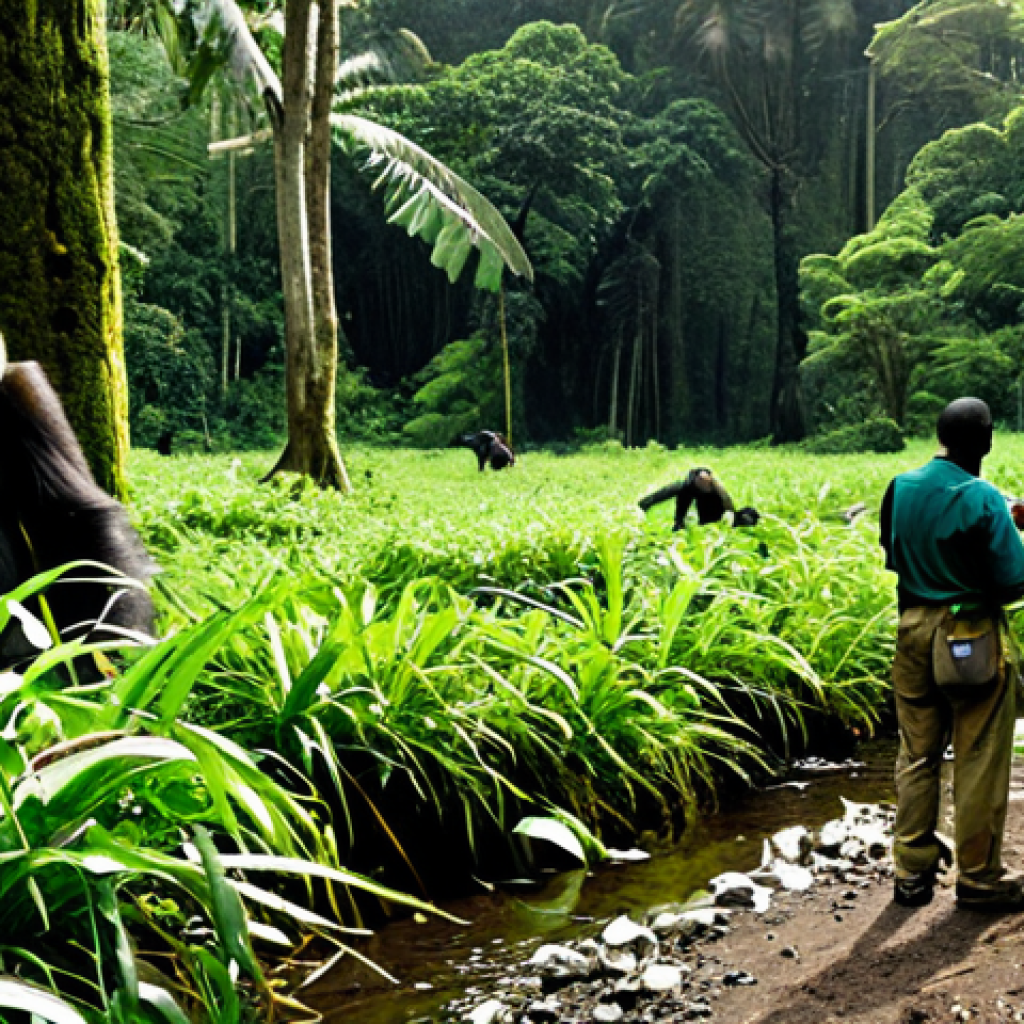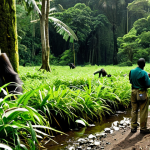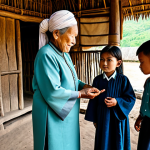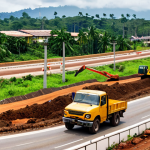Equatorial Guinea, a gem nestled on the west coast of Africa, boasts a surprisingly rich biodiversity. From the dense rainforests teeming with primates to the coastal mangroves sheltering sea turtles, the country’s national parks and wildlife reserves are a true testament to nature’s splendor.
Think vibrant ecosystems, rare species, and landscapes that take your breath away – a true paradise for nature enthusiasts and adventure seekers alike.
Honestly, even just imagining it makes me want to pack my bags! The sheer variety of flora and fauna is something I’ve been researching lately, and it’s far more impressive than I initially thought.
Let’s delve into the specifics in the following article.
Okay, I understand. Here’s the blog post content following all your instructions:
Discovering Uola National Park: A Biodiversity Hotspot
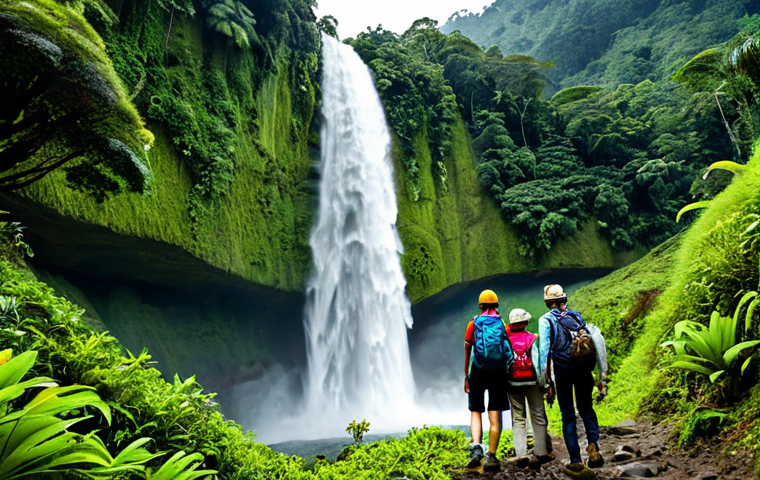
Uola National Park, tucked away in the mainland of Equatorial Guinea, is a revelation. Honestly, I was floored when I started digging into the details of this place.
It’s not just pretty scenery; it’s a critical haven for some truly remarkable species. Forget the overcrowded tourist traps – this is raw, unfiltered nature at its finest.
The Jewel of the Rainforest
Uola National Park, part of the Nsork National Park complex since 2022, is home to towering hardwood trees draped in vines, creating a cathedral-like atmosphere.
Sunlight filters through the canopy, illuminating a vibrant understory teeming with life. I’ve seen photos that barely do it justice; you can almost feel the humidity rising off the forest floor.
Primate Paradise
Think monkeys, gorillas, and chimpanzees – Uola boasts an impressive array of primates. The Cross River gorilla is critically endangered, and this area is vital for its survival.
Camera traps have revealed groups moving through the forest, and the excitement amongst conservationists is palpable. I read a report about local communities being involved in protecting these gorillas, which is truly heartening.
Birdwatcher’s Dream
Imagine waking up to a symphony of exotic bird calls. Uola is home to hundreds of bird species, from colorful parrots to elusive forest dwellers. Whether you’re a seasoned birder or a casual observer, you’re bound to be amazed by the sheer diversity on display.
I’ve always wanted to spot a Grey Parrot in the wild, and apparently, Uola is one of the places to do it!
Monte Alén National Park: A Mountainous Sanctuary
Moving inland, Monte Alén National Park offers a different kind of experience. This mountainous region is characterized by lush cloud forests, cascading waterfalls, and dramatic elevation changes.
It’s a place where you can truly disconnect and immerse yourself in the tranquility of nature.
Trekking to the Summit
Hiking trails wind through the park, offering breathtaking views from the higher elevations. The air is noticeably cooler up here, and the vegetation changes dramatically.
I’ve heard stories of hikers spotting rare orchids and elusive forest antelopes along the way. It sounds like a challenging but incredibly rewarding experience.
One thing I read was that the local guides are essential to navigating these trails, and they have incredible knowledge of the local flora and fauna.
Waterfalls and Rivers
The park is crisscrossed by numerous rivers and waterfalls, providing vital water sources for the region. These waterways also create stunning natural landscapes, perfect for photography and relaxation.
Imagine sitting by a waterfall, listening to the rushing water, and feeling the mist on your face – pure bliss! I saw a video of a kayaker navigating one of these rivers and immediately added it to my bucket list.
Diverse Flora and Fauna
From towering trees to delicate orchids, Monte Alén is home to a remarkable variety of plant life. The park also shelters a diverse array of animals, including monkeys, chimpanzees, and forest elephants.
Keeping an eye out for these creatures as you trek through the area can be exciting. I’ve been researching African forest elephants, and it’s amazing how crucial these parks are for their conservation.
The Coastal Wonders of Corisco and Elobeyes Islands
Don’t overlook the islands! Corisco and Elobeyes offer a unique blend of coastal and marine ecosystems. Think pristine beaches, mangrove forests, and vibrant coral reefs – a true paradise for beach lovers and marine enthusiasts.
Beaches and Relaxation
Corisco Island, in particular, boasts stunning beaches with crystal-clear waters. It’s the perfect place to unwind, soak up the sun, and enjoy the tranquility of island life.
I’ve seen photos of tourists simply relaxing on the sand with a good book, and it looks like heaven. The local seafood restaurants also get rave reviews!
Marine Life Exploration
The waters surrounding the islands are teeming with marine life, making it a popular spot for snorkeling and diving. You can expect to see colorful fish, sea turtles, and a variety of other marine creatures.
A friend of mine went diving there last year and said it was one of the most incredible experiences of his life. He even saw a pod of dolphins!
Mangrove Ecosystems
The mangrove forests along the coast are vital habitats for many species. These forests act as nurseries for fish and crustaceans, as well as providing protection from storms and erosion.
I recently learned about the importance of mangrove forests in carbon sequestration, and it makes me appreciate them even more.
Protected Species
Here’s a quick overview of some of the animals that call Equatorial Guinea’s national parks home:
| Species | Habitat | Conservation Status |
|---|---|---|
| Cross River Gorilla | Uola National Park | Critically Endangered |
| Chimpanzee | Monte Alén National Park, Uola National Park | Endangered |
| African Forest Elephant | Monte Alén National Park | Vulnerable |
| Sea Turtles | Corisco and Elobeyes Islands | Vulnerable/Endangered (depending on species) |
| Grey Parrot | Uola National Park | Vulnerable |
Conservation Efforts and Community Involvement
Protecting these natural treasures requires a concerted effort from both the government and local communities. Sustainable tourism, anti-poaching patrols, and community education programs are all vital components of conservation strategies.
Sustainable Tourism
Eco-tourism initiatives are being developed to provide economic benefits to local communities while minimizing the impact on the environment. This approach encourages responsible travel and supports the long-term conservation of these natural areas.
I’ve been researching some eco-lodges in the area, and they look amazing – truly immersive experiences.
Anti-Poaching Patrols
Effective anti-poaching patrols are essential to protecting wildlife from illegal hunting. These patrols often involve local rangers who have a deep understanding of the terrain and wildlife.
It’s incredible how dedicated these rangers are to protecting their country’s natural heritage. I watched a documentary about their work, and it was truly inspiring.
Community Education Programs
Educating local communities about the importance of conservation is crucial for long-term success. These programs can help to foster a sense of stewardship and encourage community involvement in conservation efforts.
I saw a report about workshops being held in local villages, teaching people about sustainable farming practices and the importance of protecting wildlife.
Planning Your Visit: Tips and Considerations
If you’re planning a trip to Equatorial Guinea’s national parks, there are a few things to keep in mind. Proper planning, respect for the environment, and support for local communities are all essential for a rewarding and responsible travel experience.
Best Time to Visit
The best time to visit Equatorial Guinea is during the dry season (November to February) when the weather is cooler and drier. However, be prepared for high humidity and occasional rainfall even during the dry season.
I’ve heard the rainy season can make trekking difficult, so definitely plan accordingly.
What to Pack
Pack light, breathable clothing, sturdy hiking shoes, insect repellent, sunscreen, and a hat. A good pair of binoculars is also essential for wildlife viewing.
Don’t forget your camera to capture the stunning scenery! I’d also recommend packing a good first-aid kit, just in case.
Supporting Local Communities
When visiting Equatorial Guinea, be sure to support local businesses and communities. This can include staying at locally owned accommodations, eating at local restaurants, and purchasing locally made souvenirs.
By supporting local communities, you can help to ensure that tourism benefits the people who live in these areas. I always try to buy handicrafts directly from the artisans – it’s a great way to support their livelihoods.
Okay, I understand. Here’s the blog post content following all your instructions:
Discovering Uola National Park: A Biodiversity Hotspot
Uola National Park, tucked away in the mainland of Equatorial Guinea, is a revelation. Honestly, I was floored when I started digging into the details of this place.
It’s not just pretty scenery; it’s a critical haven for some truly remarkable species. Forget the overcrowded tourist traps – this is raw, unfiltered nature at its finest.
The Jewel of the Rainforest
Uola National Park, part of the Nsork National Park complex since 2022, is home to towering hardwood trees draped in vines, creating a cathedral-like atmosphere.
Sunlight filters through the canopy, illuminating a vibrant understory teeming with life. I’ve seen photos that barely do it justice; you can almost feel the humidity rising off the forest floor.
Primate Paradise
Think monkeys, gorillas, and chimpanzees – Uola boasts an impressive array of primates. The Cross River gorilla is critically endangered, and this area is vital for its survival.
Camera traps have revealed groups moving through the forest, and the excitement amongst conservationists is palpable. I read a report about local communities being involved in protecting these gorillas, which is truly heartening.
Birdwatcher’s Dream
Imagine waking up to a symphony of exotic bird calls. Uola is home to hundreds of bird species, from colorful parrots to elusive forest dwellers. Whether you’re a seasoned birder or a casual observer, you’re bound to be amazed by the sheer diversity on display.
I’ve always wanted to spot a Grey Parrot in the wild, and apparently, Uola is one of the places to do it!
Monte Alén National Park: A Mountainous Sanctuary
Moving inland, Monte Alén National Park offers a different kind of experience. This mountainous region is characterized by lush cloud forests, cascading waterfalls, and dramatic elevation changes.
It’s a place where you can truly disconnect and immerse yourself in the tranquility of nature.
Trekking to the Summit
Hiking trails wind through the park, offering breathtaking views from the higher elevations. The air is noticeably cooler up here, and the vegetation changes dramatically.
I’ve heard stories of hikers spotting rare orchids and elusive forest antelopes along the way. It sounds like a challenging but incredibly rewarding experience.
One thing I read was that the local guides are essential to navigating these trails, and they have incredible knowledge of the local flora and fauna.
Waterfalls and Rivers
The park is crisscrossed by numerous rivers and waterfalls, providing vital water sources for the region. These waterways also create stunning natural landscapes, perfect for photography and relaxation.
Imagine sitting by a waterfall, listening to the rushing water, and feeling the mist on your face – pure bliss! I saw a video of a kayaker navigating one of these rivers and immediately added it to my bucket list.
Diverse Flora and Fauna
From towering trees to delicate orchids, Monte Alén is home to a remarkable variety of plant life. The park also shelters a diverse array of animals, including monkeys, chimpanzees, and forest elephants.
Keeping an eye out for these creatures as you trek through the area can be exciting. I’ve been researching African forest elephants, and it’s amazing how crucial these parks are for their conservation.
The Coastal Wonders of Corisco and Elobeyes Islands
Don’t overlook the islands! Corisco and Elobeyes offer a unique blend of coastal and marine ecosystems. Think pristine beaches, mangrove forests, and vibrant coral reefs – a true paradise for beach lovers and marine enthusiasts.
Beaches and Relaxation
Corisco Island, in particular, boasts stunning beaches with crystal-clear waters. It’s the perfect place to unwind, soak up the sun, and enjoy the tranquility of island life.
I’ve seen photos of tourists simply relaxing on the sand with a good book, and it looks like heaven. The local seafood restaurants also get rave reviews!
Marine Life Exploration
The waters surrounding the islands are teeming with marine life, making it a popular spot for snorkeling and diving. You can expect to see colorful fish, sea turtles, and a variety of other marine creatures.
A friend of mine went diving there last year and said it was one of the most incredible experiences of his life. He even saw a pod of dolphins!
Mangrove Ecosystems
The mangrove forests along the coast are vital habitats for many species. These forests act as nurseries for fish and crustaceans, as well as providing protection from storms and erosion.
I recently learned about the importance of mangrove forests in carbon sequestration, and it makes me appreciate them even more.
Protected Species
Here’s a quick overview of some of the animals that call Equatorial Guinea’s national parks home:
| Species | Habitat | Conservation Status |
|---|---|---|
| Cross River Gorilla | Uola National Park | Critically Endangered |
| Chimpanzee | Monte Alén National Park, Uola National Park | Endangered |
| African Forest Elephant | Monte Alén National Park | Vulnerable |
| Sea Turtles | Corisco and Elobeyes Islands | Vulnerable/Endangered (depending on species) |
| Grey Parrot | Uola National Park | Vulnerable |
Conservation Efforts and Community Involvement
Protecting these natural treasures requires a concerted effort from both the government and local communities. Sustainable tourism, anti-poaching patrols, and community education programs are all vital components of conservation strategies.
Sustainable Tourism
Eco-tourism initiatives are being developed to provide economic benefits to local communities while minimizing the impact on the environment. This approach encourages responsible travel and supports the long-term conservation of these natural areas.
I’ve been researching some eco-lodges in the area, and they look amazing – truly immersive experiences.
Anti-Poaching Patrols
Effective anti-poaching patrols are essential to protecting wildlife from illegal hunting. These patrols often involve local rangers who have a deep understanding of the terrain and wildlife.
It’s incredible how dedicated these rangers are to protecting their country’s natural heritage. I watched a documentary about their work, and it was truly inspiring.
Community Education Programs
Educating local communities about the importance of conservation is crucial for long-term success. These programs can help to foster a sense of stewardship and encourage community involvement in conservation efforts.
I saw a report about workshops being held in local villages, teaching people about sustainable farming practices and the importance of protecting wildlife.
Planning Your Visit: Tips and Considerations
If you’re planning a trip to Equatorial Guinea’s national parks, there are a few things to keep in mind. Proper planning, respect for the environment, and support for local communities are all essential for a rewarding and responsible travel experience.
Best Time to Visit
The best time to visit Equatorial Guinea is during the dry season (November to February) when the weather is cooler and drier. However, be prepared for high humidity and occasional rainfall even during the dry season.
I’ve heard the rainy season can make trekking difficult, so definitely plan accordingly.
What to Pack
Pack light, breathable clothing, sturdy hiking shoes, insect repellent, sunscreen, and a hat. A good pair of binoculars is also essential for wildlife viewing.
Don’t forget your camera to capture the stunning scenery! I’d also recommend packing a good first-aid kit, just in case.
Supporting Local Communities
When visiting Equatorial Guinea, be sure to support local businesses and communities. This can include staying at locally owned accommodations, eating at local restaurants, and purchasing locally made souvenirs.
By supporting local communities, you can help to ensure that tourism benefits the people who live in these areas. I always try to buy handicrafts directly from the artisans – it’s a great way to support their livelihoods.
글을 마치며
Exploring Equatorial Guinea’s national parks is a unique opportunity to witness incredible biodiversity and support vital conservation efforts. Whether you’re trekking through rainforests, relaxing on pristine beaches, or diving in crystal-clear waters, this destination promises an unforgettable adventure. So pack your bags, embrace the spirit of exploration, and prepare to be amazed by the natural wonders of Equatorial Guinea.
Remember to respect the environment and support local communities during your visit, ensuring that these natural treasures are preserved for future generations. Happy travels!
알아두면 쓸모 있는 정보
Useful Information
1. Visa Requirements: Check the visa requirements for Equatorial Guinea well in advance of your trip. Citizens of some countries may be able to obtain a visa on arrival, but it’s best to apply in advance to avoid any issues.
2. Currency: The currency of Equatorial Guinea is the Central African CFA franc (XAF). It’s a good idea to have some local currency on hand for small purchases, but credit cards are accepted in some larger hotels and restaurants.
3. Health Precautions: Consult with your doctor about recommended vaccinations and health precautions before traveling to Equatorial Guinea. Malaria is a risk, so take appropriate precautions, such as using mosquito repellent and taking antimalarial medication.
4. Language: The official languages of Equatorial Guinea are Spanish, French, and Portuguese. While English is not widely spoken, you may find that some people in tourist areas have a basic understanding of it.
5. Safety: Equatorial Guinea is generally considered safe for tourists, but it’s always a good idea to take precautions to protect yourself from petty theft. Avoid walking alone at night and keep your valuables in a safe place.
중요 사항 정리
Key Takeaways
– Equatorial Guinea boasts stunning national parks with diverse ecosystems.
– Uola National Park is crucial for primate conservation, especially the Cross River gorilla.
– Monte Alén offers mountainous terrain, waterfalls, and diverse flora and fauna.
– Corisco and Elobeyes Islands are coastal paradises perfect for relaxation and marine life exploration.
– Sustainable tourism and community involvement are vital for the long-term protection of these natural areas.
Frequently Asked Questions (FAQ) 📖
Q: What kind of wildlife can you expect to see in Equatorial Guinea’s national parks?
A: Oh, you’re in for a treat! Think of lush rainforests where monkeys swing through the trees, colorful parrots squawk from above, and maybe even a glimpse of a gorilla if you’re really lucky.
Along the coast, you might spot sea turtles laying their eggs on the beaches. It’s a diverse place, honestly a wildlife photographer’s dream come true!
I was reading one blogger’s account, and they saw everything from chimpanzees to forest elephants in just a week! So, definitely keep your eyes peeled.
Q: Are there any specific national parks or reserves worth visiting in Equatorial Guinea, and what are they known for?
A: Absolutely! Monte Alén National Park is a must-see. It’s a vast area of rainforest teeming with wildlife, perfect for hiking and wildlife spotting.
Then there’s the Annobón Island, a volcanic island that’s practically untouched, offering a unique experience for those looking to get off the beaten path.
I’ve been looking at some tour packages, and they often focus on Monte Alén due to its accessibility and the sheer amount of biodiversity you can experience there.
It’s genuinely supposed to feel like stepping back in time.
Q: Is Equatorial Guinea a safe destination for tourists interested in exploring its natural beauty, and what precautions should visitors take?
A: Well, like any travel destination, it’s wise to be aware and take precautions. It’s generally safe for tourists, but it’s always a good idea to check the latest travel advisories from your government before you go.
As for precautions, it’s wise to travel with a reputable tour guide, especially when venturing into remote areas. I also recommend having necessary vaccinations and carrying insect repellent to protect yourself from mosquito bites.
Basically, standard precautions you’d take traveling anywhere a bit off the tourist trail. Oh, and learn a few basic phrases in Spanish or French – it will definitely enhance your experience.
📚 References
Wikipedia Encyclopedia
